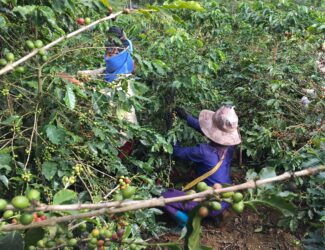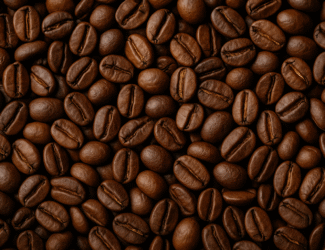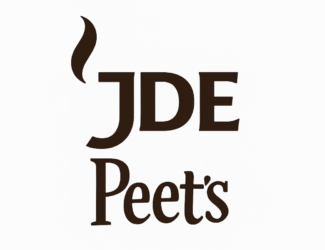
China’s wonders never end .. Mushroom coffee is the latest craze
Dubai – 16 September 2025 – (Qahwa World) – A café in China’s southwestern Yunnan province has launched two seasonal drinks that blend coffee with penny bun (porcini) mushrooms, priced at 23 yuan (about US$3) per cup. The offerings are a “Cheese Americano with Penny Bun” and a “Penny Bun Oat Milk Latte,” an innovation built on uniting two local signatures in one cup: Yunnan coffee and premium wild mushrooms.
The preparation details point to a measured flavor approach: the Cheese Americano is served with mushroom powder, a coffee base, a layer of cheese cream, and a cookie shaped like the mushroom, while the oat-milk latte is made with coffee, mushroom powder, and oat milk. Each is priced at roughly 23 yuan. These formulations have been attributed to “Forleaf Coffee” in Yunnan, according to recent regional coverage.
Crowds have shown up from the early days. Staff at the café say they sell around 50–70 cups of mushroom coffee daily, with customers coming specifically to try the two drinks. The venue has previously offered a “black truffle coffee,” suggesting a pattern of seasonal, attention-grabbing innovations that ride the wave of curiosity.
The timing is no accident; June through September is wild-mushroom season in Yunnan, when celebrated varieties—such as matsutake, termite mushrooms, and penny bun—top the lists of those seeking forest-driven flavors. This seasonal context helps explain the widespread interest and the early impression that “the mushroom here is part of the terroir,” not a passing add-on.
On social platforms, opinions split between those who see mushrooms as “too precious to be mixed with coffee” and others who found the taste “surprisingly delicious.” These differing positions have accompanied news of strong sales, giving the innovation a debate that goes beyond mere “trendiness.”
Even so, short-term success does not guarantee continuity. Management at Forleaf Coffee has indicated that repeating the drinks next year is not assured and will depend on the cost of ingredients—chief among them the mushroom. For reference, penny bun prices in August ranged between 40 and 80 yuan per kilogram, a band wide enough to make the decision to continue primarily an economic one before it is a marketing call.
The Yunnan experiment fits into a broader Chinese wave that blends coffee with local or unusual components. In 2024, Starbucks China offered a pork-flavored latte for Lunar New Year—priced at 68 yuan per cup—in a notable example of limited editions serving as both flavor testbeds and marketing tools. In recent months, other controversial drinks—such as a “pork-intestine latte” in Sichuan—have also spread widely on social media.
What distinguishes the Yunnan case is that the “mushroom” here is not “functional” in the wellness sense common in global mushroom-coffee blends (like lion’s mane and chaga), but an edible porcini used for flavor—crafting a new profile that marries a gentle umami with coffee’s sweet-bitter edge. This approach relies on the ingredient’s rootedness in the region’s forests and daily life, not on physiological claims or dietary supplements.
Despite the momentum, repeatability is constrained by several factors: price volatility during the harvest season, the cost of developing and localizing recipes inside production lines, and the café’s ability to maintain powder quality and a stable supply. While queues often mark the initial “buzz,” turning the novelty into a seasonal signature requires a precise balance of feasibility, supply, and flavor. Local coverage—explicitly and implicitly—has tied the drink’s fate to input costs and annual availability.
In sum, this is a flavor-first experiment that draws more on terroir than on “novelty for novelty’s sake,” while capturing the spirit of rapid innovation in China’s highly competitive coffee market, where local blends become shareable stories that drive visits. Between admiration and objection, the future of “mushroom coffee” in Yunnan rests on seasonal pricing—numbers alone will decide whether the craze returns next season or remains a memory of 2025.






